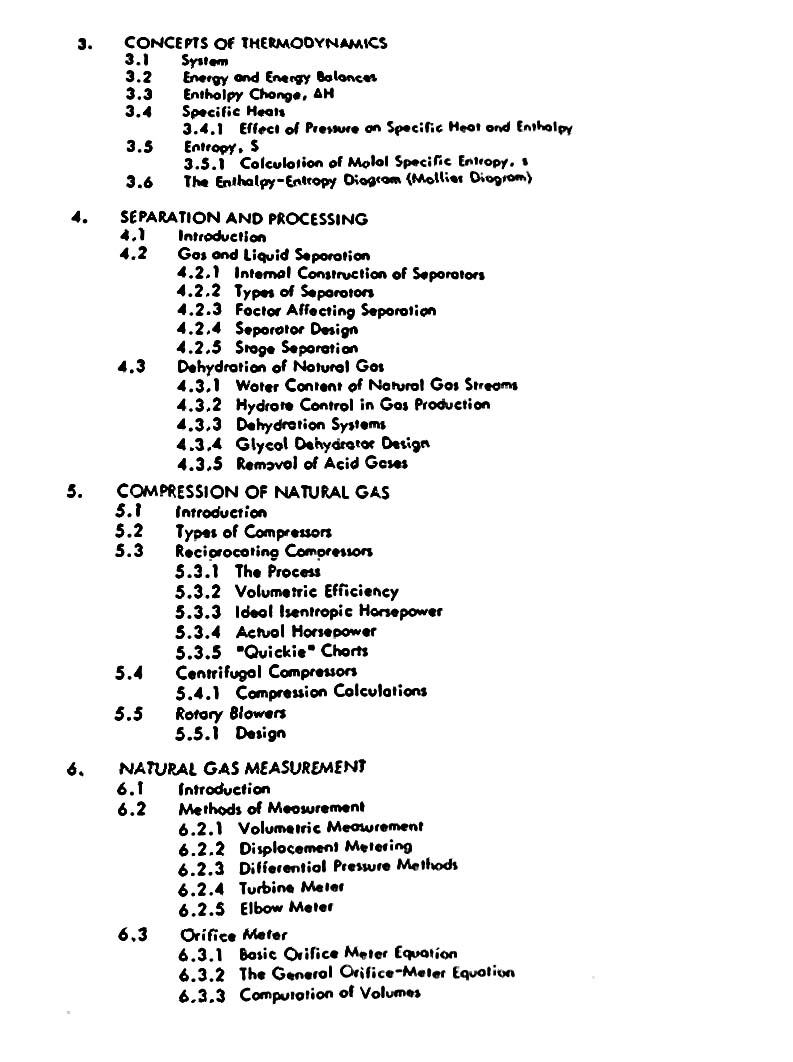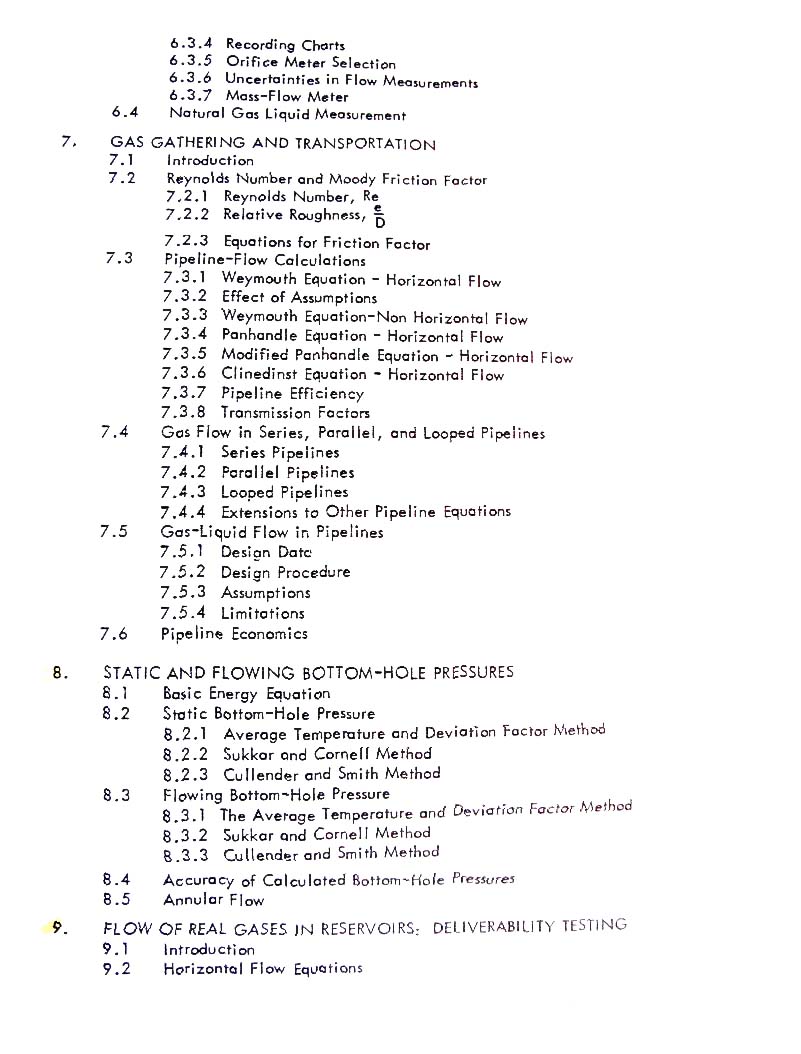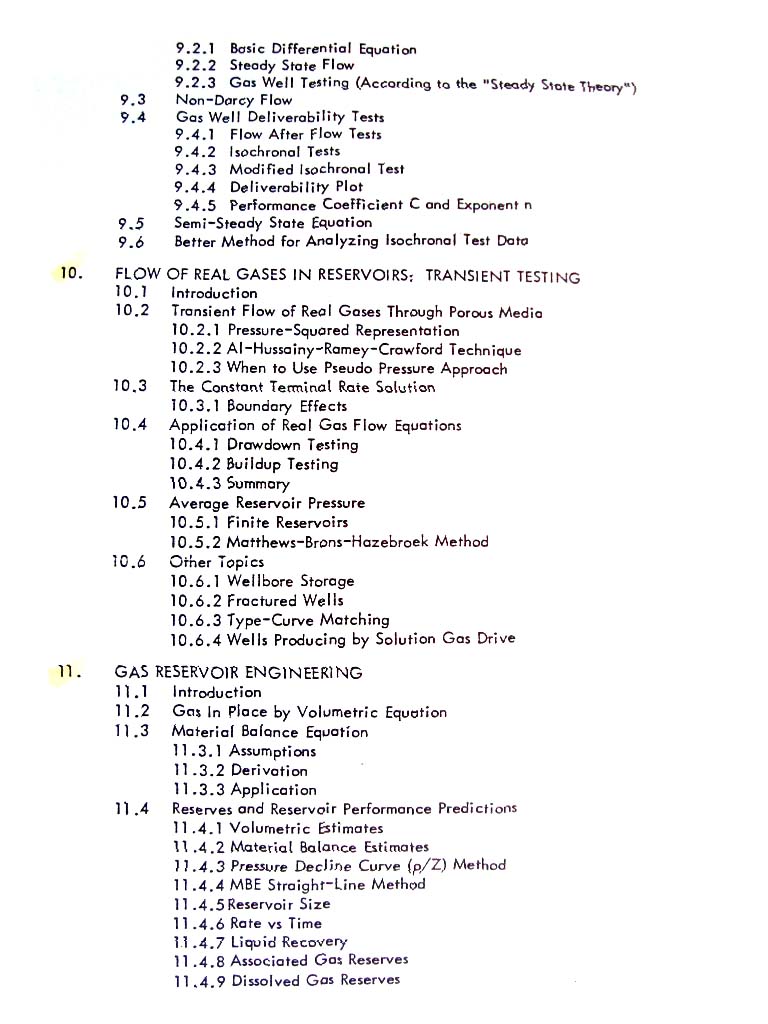NATURAL GAS ENGINEERING
A SYSTEM APPROACH
By: DR. CHI U. IKOKU
Organized by: PT. Sarkindo Mulia
January 1987
Terdiri dari 3 buku berseri, kondisi buku sangat baik, bersih, teks jelas mudah dibaca.
Cover: hardcover
Bahasa: Inggris
Berat: 5.5 kilogram
Dimensi per buku (pxlxt): 28.5 cm x 24.5 cm x 4 cm
Harga: Rp. 1.500.000,- di babedanishan
CONTENTS:
BOOK 1
1. INTRODUCTION
1.1. Development of Natural Gas
1.2. Conventional Natural Gas
1.2.1. Physical Characteristics
1.2.2. Classification of Natural Gas Accumulations
1.2.3. Types of Natural Gas
1.2.4. Gas in Tight Sands
1.2.5. Gas in Tight Shale
1.2.6. Methane Occluded in Coal
1.2.7. Natural Gas from Geopressured Reservoirs
1.3. Substitute Natural Gas
1.3.1. Coal
1.3.2. Oil-Shale
1.3.3. Hydrocarbon Liquids
1.3.4. Organic Wastes
1.3.5. Hydrogen
2. PROPERTIES OF NATURAL GASES AND CONDENSATE SYSTEMS
2.2. Composition of Natural Gas
2.3. Phase Behavior
2.4. The Ideal Gas
2.4.1. Boyle’s Law
2.4.2. Charles’ Law
2.4.3. Boyle’s and Charles’ Law
2.4.4. Avogadro’s Law
2.5.4. The Ideal Gas Law
2.5. Properties of Gaseous Mixtures
2.6. Behavior of Real Gases
2.6.1. Real Gas Equation of State
2.6.2. The Theorem of Corresponding States
2.6.3. Determination of Z-factor
2.6.4. Supercompressibility of Natural Gases
2.6.6. Gas Formation Volume Factor and Expansion Factor
2.7. Water Vapor Content of Natural Gas
2.8. Two-Phase Systems
2.8.1. API Gravity
2.8.2. Gas Gravity of Total Well Stream
2.8.3. Two-Phase Z-factor
2.9. Some Gas Conversion Equations
3. CONCEPTS OF THERMODYNAMICS
3.1. System
3.2. Energy and Energy Balances
3.3. Enthalpy Change
3.4. Specific Heats
3.5. Entropy, S
3.6. The Enthalpy-Entropy Diagram
4. SEPARATOR AND PROCESSING
4.2. Gas and Liquid Separation
4.3. Dehydration of Natural Gas
5. COMPRESSION OF NATURAL GAS
5.2. Types of Compressors
5.3. Centrifugal Compressor
5.4. Rotary Blowers
BOOK 2
6. NATURAL GAS MEASUREMENT
6.2. Methods of Measurement
6.3. Orifice Meter
6.4. Natural Gas Liquid Measurement
7. GAS GATHERING AND TRANSPORTATION
7.2. Reynolds Number and Moody Friction Factor
7.3. Pipeline-Flow Calculations
7.4. Gas Flow in Series, Parallel, and Looped Pipelines
7.5. Gas-Liquid Flow in Pipelines
7.6. Pipeline Economics
8. STATIC AND FLOWING BOTTOM-HOLE PRESSURE
8.1. Basic Energy Equation
8.2 Static Bottom-Hole Pressure
8.2.1. Average Temperature and Deviation Factor Method
8.2.2. Sukkar and Cornell Method
8.2.3. Cullender and Smith Method
8.3. Flowing Bottom-Hole Pressure
8.3.1. The Average Temperature and Deviation Factor Method
8.3.2. Sukkar and Cornell Method
8.4. Accuracy of Calculated Bottom-Hole Pressures
8.5. Annular Flow
9. FLOW OF REAL GASES IN RESERVOIR: DELIVERABILITY TESTING
9.2. Horizontal Flow Equation
9.3. Non-Darcy Flow
9.4. Gas Well Deliverability Tests
9.4.1. Flow After Flow Tests
9.4.2. Isochronal Tests
9.4.3. Modified Isochronal Tests
9.4.4. Deliverability Plot
9.4.5. Performance Coefficient C and Exponent n
9.5. Semi-Steady State Equation
9.6. Better Method for Analyzing Isochronal Test Data
10. FLOW OF REAL GASES IN RESERVOIR: TRANSIENT TESTING
10.2. Transient Flow of Real Gases Through Porous Media
10.3. The Constant Terminal Rate Solution
10.4. Application of Real Gas Flow Equations
10.5. Average Reservoir Pressure
10.6. Other Topics: Wellbore Storage, Fractured Wells, Type-Curve Matching, Wells Producing by Solution Gas Drive
BOOK 3
11. GAS RESERVOIR ENGINEERING
11.2. Gas in Place by Volumetric Equation
11.3. Material Balance Equation
11.4. Reserves and Reservoir Performance Predictions
11.5. General Material-Balance Equation
12. GAS FIELD DEVELOPMENT
12.2. Reserves
12.3. Deliverability
12.4. Predicting Reservoirs Performance
13. STORAGE OF NATURAL GAS
13.2. Natural Gas Storage in Pipelines
13.3. Underground Storage of Natural Gas
13.4. Storage in Depleted Oil Reservoirs
13.5. Storage in Aquifers
13.6. Storage in Salt Cavities
14. GAS-CONDENSATE RESERVOIRS
14.2. Vapor-Liquid Equilibria
14.3. Gas Condensate Testing and Sampling
14.4. Condensate System Behavior in the Single-Phase Region
14.5. Condensate System Behavior in the Two-Phase Region
14.6. Prediction of Reservoir Performance
15. LIQUEFIED NATURAL GAS
15.2. Liquefaction and Revaporization of Natural Gas
15.3. Storage of Liquefied Natural Gas
15.4. Transportation of Liquefied Natural Gas
APPENDIX
INDEX








